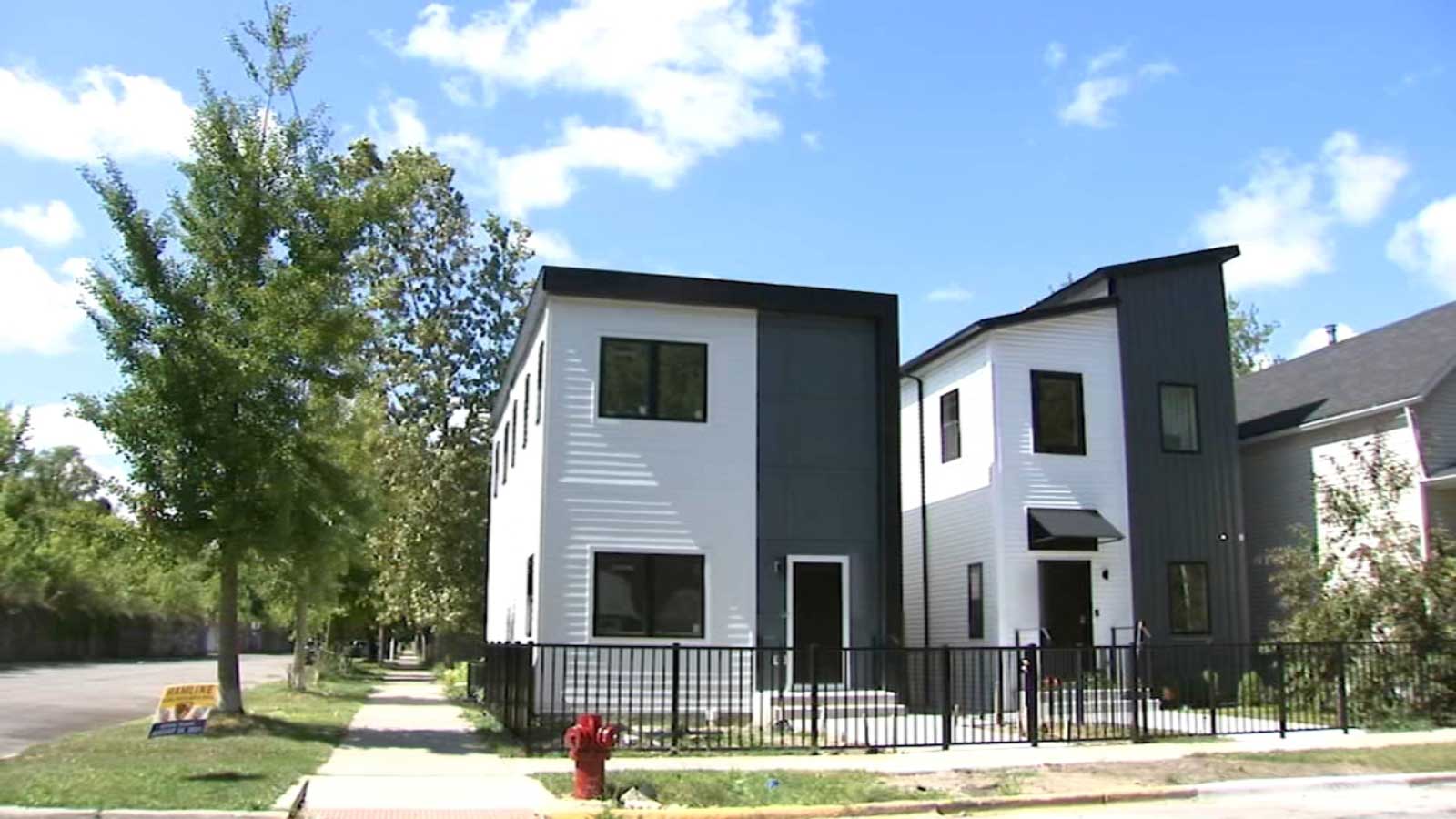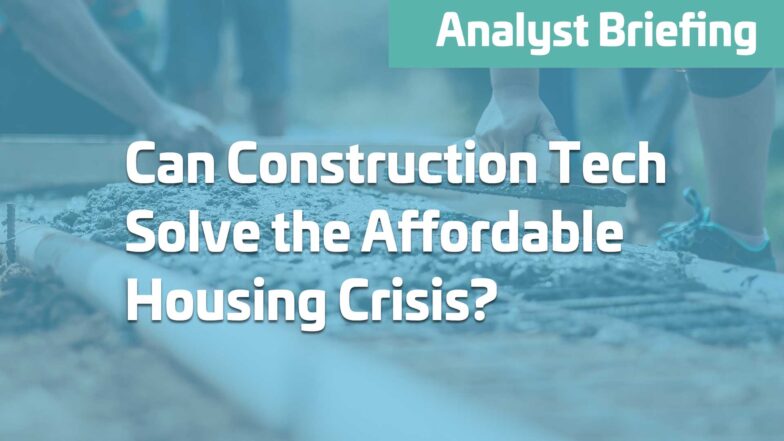Over the last few years, mortgage rates have climbed to levels not seen in over a decade. At the same time, the cost to build new houses has gone up by 23% since 2019, outstripping even the current high pace of inflation.
While home and commercial development costs are ballooning, affordable housing, which must also contend with complicated financing structures and additional regulations, faces even greater financial and logistical hurdles. Factor in the reality that there are currently 1.6 billion people living in inadequate housing and the term “affordable housing crisis” starts to feel like an understatement (Unhabitat)
Against the backdrop of this gloomy set of circumstances, a new generation of venture investors and entrepreneurs are holding out the promise of emerging technologies to turn the vision of modern-day affordable housing into a reality.
The future is now!
In recent years the construction industry has shown an increasing hunger for technology adoption. In fact, more companies are dedicating personnel to technology integration – jumping from 65% to 80% since 2020 (BuiltWorlds). The venture capital community is also taking notice of the technology explosion in the construction sector, as seen by a jump in investment from $1.6 billion to $4.5 billion from 2020 to 2021 (BuiltWorlds).
As money pours into the sector, pioneering investment groups like Moderne Ventures, Hometeam, and Meta Prop, along with housing non-profits like New Story are heavily focused on the development of real estate and construction-driven technologies that promise to make affordable housing more accessible.
During her keynote at BuiltWorld’s Venture West 2022 in March, Julieta Moredai, partner and founding member of Hometeam Ventures noted, “We’ve seen a ripple effect of challenges in the end-to-end Built process that centers around cost, time and quality of housing.”
One way Hometeam is tackling these challenges is by piloting early-stage construction technology in housing projects for the homeless. In addition to driving impact ROI in the housing communities, by showcasing how they are gaining efficiencies in time, cost, and quality, the start-ups are also driving financial ROI and positioning themselves for later stage investments.
CEO of Moderne Ventures, Paige Pitcher will delve deeper into the future of ESG with a focus on social practices as part of her keynote address at BuiltWorlds upcoming Buildings Conference. Of course, VC investments in affordable housing technology directly correlate with the growing number of technologies bringing housing affordability and sustainability into reality.

3D Printing
From a cost, quality and time perspective, 3D printed homes show promising potential. The cost of building an average sized 3-bedroom home with 3D printing is about 20-40% less than with conventional building methods (3drific). And, unlike conventional construction, the automated and continuous nature of 3D-printed construction enables higher-quality buildings in less time. Furthermore, by eliminating inefficiencies through standardization of tasks and continuous process improvement, 3D printing can reduce design time by up to 60% (Science Direct).
Home Team Ventures and Moderne Ventures have made significant investments in ICON, a 3D printed housing firm at the forefront of affordable housing. With several projects across the globe, ICON is using its innovative robotics, software, and advanced materials to meet rising demand for affordable, technology-driven homes. Following the announcement of plans for its 100-home community near Austin, ICON co-founder and CEO Jason Ballard commented, “ICON exists as a response to the global housing crisis. Construction-scale 3D printing not only delivers higher-quality homes faster and more affordably, but fleets of printers can change the way that entire communities are built for the better.”
Modularization
The growing use of modular construction is also delivering on the promise to deliver more affordable housing. Modular construction has the benefit of continuous production, which drives down material cost by 10 to 14 percent. The consistent work environment, which takes weather delays out of the equation, ultimately produces homes 30 to 50 percent sooner than traditional construction. (Shelterforce).
One such company (and part of the Hometeam Ventures portfolio), Inherent L3C is driven by its mission “to transform lives, communities and generations through the power of homeownership.” In a recent Forbes article, Tim Swanson, Inherent L3C Founder and CEO notes that because modular construction drives both material and production time down, Inherent L3C is able to produce a home at a fraction of the time - six weeks versus six months. Swanson will delve deeper into the impact of modular construction on affordable housing as a speaker at the upcoming Buildings Conference.


Prefabrication
Whether looking at modular, panel-built, or manufactured homes, prefabricated homes are quickly becoming the go-to for developers and municipalities seeking new ways to manage homelessness or offset rising housing prices for working class families.
Attendees of the BuiltWorlds’ Buildings Conference will have the opportunity to learn more about the impact of modularization and prefabrication on buildings during a panel discussion moderated by Sheeba Ramaji, Director, Innovation Research at MiTek. Panelists will also include: Jim Dunn, President, Stack Modular; Tim Swanson, Founder & CEO, Inherent L3; Michael Palmer, Head of Strategy & Real Estate, Volumetric Building Companies; and Alexey Dubov, Co-founder & Chief Innovation Officer, Mighty Buildings.
Bottom line
The affordable housing crisis is far-reaching and complex, and there is no single panacea to combat it. However, the proliferation of construction tech combined with growing venture capital investments are already having a tangible impact. As new technologies come to market and existing tech is broadened and improved, the term “affordable housing crisis” may soon become simply “affordable housing.”
The 2022 Buildings Conference will focus on the role of technology in creating smart, sustainable buildings in areas including planning, materials and systems, operations and maintenance, energy management and user experience. For more information or to register for The Buildings Conference, please visit: https://builtworlds.com/event/buildings-2022/
Want to Learn more about smart buildings?
The 2022 Buildings Conference will focus on the role of technology in creating smart, sustainable buildings in areas including planning, materials and systems, operations and maintenance, energy management and user experience. For more information or to register for The Buildings Conference, please visit: https://builtworlds.com/event/buildings-2022/

